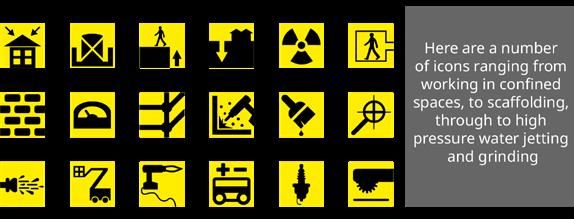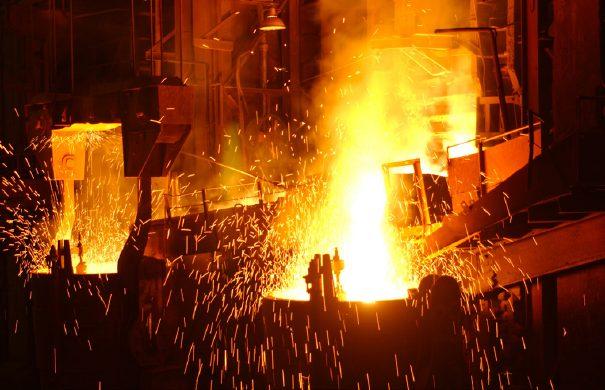
8 minute read
Risk assessment for plant maintenance in the digital age
Figure 1 – Experience working in industrial plants and facilities is helpful when performing risk assessments, but it varies greatly from one person to the next. Image: Yokogawa
Risk assessment software applications help industrial plants and facilities combine technology advantages with organisational experience and best practices to create improved safety solutions.
Advertisement
We live in an era where many of our day-today activities are carried out digitally – and many industrial plants and facilities also commonly perform tasks digitally – such as real-time machine and process control, work planning, and performance optimisation. Is it therefore a reasonable assumption that the same can be true for risk assessment? Can we say that the electrons required in any digital evaluation of risk can replace the neurons required for the thought processes we currently use to perform these tasks?
Like many questions in life, the answer is a bit yes and some no. Few individuals would fully entrust their own well-being or the safety of personnel they supervise to an algorithm, and not many companies would stake their reputation as a responsible employer completely in the hands of a software program, however well designed. On the other hand, there is plenty we can do digitally to help ensure the safety of personnel working in industrial plants and facilities.
Issues with risk assessment
Let’s start by looking at the current methodology of risk assessment, where one evaluates the likelihood and potential of something going wrong before and after the selection of mitigating factors. These types of assessments rely on several sources for information.
Experience leads the way for many, with years of work in industrial settings (Figure 1) informing many decisions. Standards, legislation, best practices and good old common sense play a part also – but plant personnel possess different levels of experience and yes, common sense. These types of variations often result in unacceptable levels of consistency or accuracy.
It is difficult to imagine a completely digital solution where a risk assessment software program trawls safety and other operating records and spits out a comprehensive solution. The risk assessment software would undoubtedly find instances of things going wrong, and it could possibly identify some learnings from these incidents. However, what most people consider experience is also made up of things that don’t go wrong, as when long periods with no incidents are used as evidence of safe work practices.
Times when things don’t go wrong probably by definition would not make it into any

Figure 2 – Risk assessment software guides users through the steps required to identify and mitigate risks. Image: Yokogawa
recordkeeping system, and these would therefore not be found by any digital system. So, are digital solutions therefore of no use for risk assessment? And apart from digital solutions, how does one reconcile differences among plant personnel to create consistent results?
Fortunately, it is possible to address these and other issues by combining digital systems with human experience to produce better risk assessments.
Risk management software solves problems
Analysing every single maintenance task that could ever happen in a plant to identify not only past incidents, but all possible future risks, is not practical. The solution is to instead break down the maintenance workplace into all its discrete elements using risk assessment software. These elements include all work conditions, activities and tools – and all materials a worker might come into contact within the course of their prescribed duties.
Each of these elements includes a description of the source of risk and how it might be mitigated. Combining all these elements completely characterises the risks inherent in the workplace and presents a means for dealing with each, creating a digital knowledge base of risks and mitigation factors. Risk assessment software solutions are now available to assist with creating these knowledge bases, guiding users through the required procedures step by step.
Users first select the icon elements for each task in the risk assessment software (Figure 2). The information contained within each element then expands to inform of the necessary controls and authorisations required, in this manner dictating the necessary workflow.
Selections within the risk assessment software are then used to identify any exacerbating factors within the job, with the appropriate controls identified. This is carried out by selecting a series of ‘Considerations’ associated with the work element. These considerations lead the user into identifying any additional potential hazards, and ultimately to identifying suitable controls.
For instance, when working on a roof, the consideration might prompt the user to consider if there may be skylights present. If there are, the user will investigate further to establish what the consequences might be of working in the vicinity of these potential hazards. In this case, falling through a skylight would be a reasonable, if not desirable, outcome.
Figure 3 – Work in potentially dangerous areas can be classified as such using risk assessment software. Image: Yokogawa

If the user then selects this consideration, they will be presented with a variety of controls they could put in place to prevent the fall from happening. These controls could range from the erection of barriers, perhaps different types, to creating exclusion zones, or just a simple warning to keep clear. This element of the knowledge base is where the bulk of site and company experience is located.
The risk assessment software also ensures the risks identified aren’t too prescriptive, and all importantly, encourages the users to think and add helpful input. There is a free text area where users can add elements not present in the knowledge base, each of which can then be reviewed and added back to the knowledge base, thus strengthening and expanding it.
In addition, when accidents and incidents do occur, learning from these can be quickly and easily added to the knowledge base for all to share going forward. The same is true for changes in legislation and identification of best practices.
With the proper risk assessment software, these knowledge bases can be translated into different languages. This means that every worker can follow the same standards and consistency, wherever they may be located worldwide. It also means best practices identified at one site in one language can be quickly assimilated at other sites, so a plant need not experience an incident to capture learnings from others.
This specific functionality has been used to great effect by one multinational energy company. They have been able to set standards and adopt learning across all of their 20+ locations across the globe. What’s more, each site can now view what anyone is doing with the risk assessment software at any other site, translated to their own local language. This affords each site the opportunity to reinforce best practices and gain early warning of any sub-standard ways of working, before things go wrong.
Risk reduction results
Risk assessment software helps deliver consistency. Manual use of standard risk assessment techniques typically produces very different results among different people. People’s skills and attributes differ, including perception of risk, so two people assessing the same job often come up with different findings. Although companies can provide guidelines to improve consistency, it can often be difficult for an individual to choose between outcomes, for example the possibility of causing mild or serious injury.
To address this issue, risk assessment software can prescribe a risk level to each element contained within a task, thus guiding users to help them reach a consistent and accurate conclusion. The risk levels of these elements can be adjusted at any point to reflect continuous learning from actual workplace experience.
Another benefit concerns the competency of the individual carrying out the assessment. Most sites will have a recognised group of people who can perform risk assessments, and they will have the systems and methodologies in place to both train and support them. However, these people can become overloaded at times – especially during turnarounds and capital projects. In these situations, it is difficult to allow other people to share the workload as each of them should first undergo full training and have the necessary experience.
But if the knowledge base software is organised in terms of discrete job elements, plants can make use of the allocated risk levels to allow certain people to carry out some assessments but not others. For instance, a less experienced worker can be used to assess a simple cleaning operation in a non-hazardous area, but not repair work in a potentially dangerous environment (Figure 3).
By dividing tasks in this manner, more personnel with wider levels of experience can work on a project, thereby taking some of the load away from the typically limited supply of more experienced personnel.
This technique was used to great effect by one operator. They had analysed the inherent risks associated with their up-and-coming turnaround and identified the majority of tasks as relatively low risk, helped by the fact that during a turnaround there is likely to be a battery limit isolation in place to keep certain areas certified as gas free. Therefore, the plant trained a larger number of low-risk assessors, freeing up time for higher-risk assessors to concentrate on their tasks. This proved to be very successful, delivering their safest turnaround ever for this particular plant.
Conclusion
In the foreseeable future, industrial plants and facilities will probably not reach a stage where risk assessment can be completely carried out using only digital methods, but one can certainly anticipate how risk assessment software can be used to augment experience, incorporate learnings, and provide consistency and accuracy when assessing risk. The knowledge bases contained within these types of software applications will naturally grow and improve through use, eventually transforming to add wisdom by representing the desired safety culture of the organisation.
For after all, is not wisdom the best use of knowledge?
About the author
Mark Carter has had a varied career. As well as 12 years as a plant engineer with BP, he has also spent years sailing the Great Lakes and developing onboard ship devices, and he spent lots of time carrying out research into alternative energies and managing laboratory/quality facilities. For the 25 years following these endeavours, Mark has been the Managing Director of RAP International, the risk assessment company that he founded and sold to Yokogawa in September 2019. Latterly, he has been working as a Consulting Business Development Director for Yokogawa.





